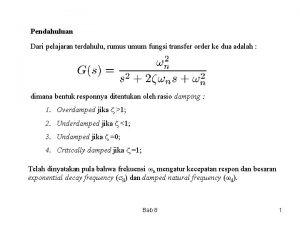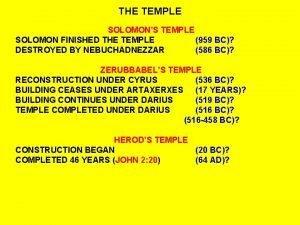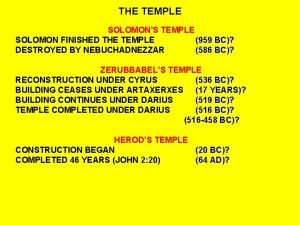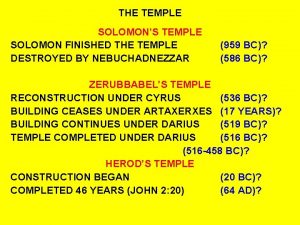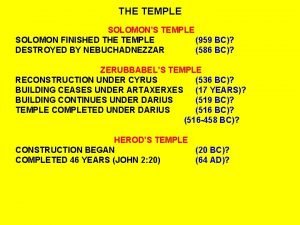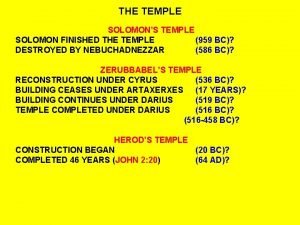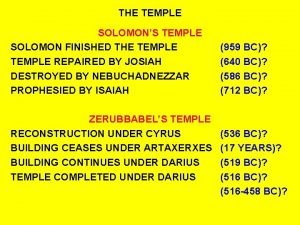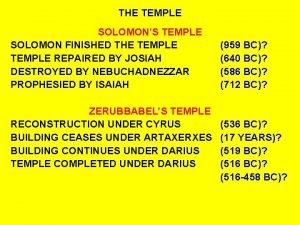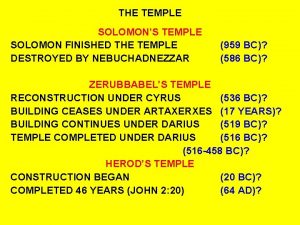Solomons temple Canaan After settling in Canaan the









- Slides: 9

Solomon’s temple

Canaan After settling in Canaan the Israelites were led by judges (shofetin). The Hebrews longed for a king to help them against growing threats from the Philistines so God granted their wish with King Saul was succeeded by David whose military success marked the high point in Jewish imperial history and eventually established Jerusalem as his capital city. His son and successor, Solomon, built a temple that would serve as the center of worship for Jews for the next millennium.

Solomon’s Temple

Babylonian Captivity In 721 BCE the Assyrians invaded and captured the territory of Israel. The invaders took the land evicted the region’s citizens, scattering Israel’s population. In 586 BCE the Babylonians captured Jerusalem and destroyed Solomon’s temple. More than 10 000 community leaders were taken prisoner and sent into exile in Babylon.

Worship With Solomon’s Temple destroyed, the people, as a community, needed to find a new way to honour God. Places for congregational worship, synagogues, were created. The Exile also marked the beginning of intense scholarly analysis of scripture and the emergence of revered teachers, known as rabbis.

The Return After the conquest of Babylon by Cyrus, the Jewish captives were encouraged to return to their homeland. The Jewish leadership co-operated with the Persians to facilitate the return. In 515 BCE a second temple was built-an outward sign of the renewal of the covenant.

Roman Rule In 164 BCE Roman general Pompey entered Jerusalem as part of a campaign to expand the Roman Empire. The Jews endured tremendous hardship at the hands of the Romans: heavy taxation, unfair administration of justice, and Roman control of both the Temple and the high priest. In 66 CE the Jews revolted and eventually gained control of the Temple and the Roman fortress, Antonia. In 70 CE the Romans responded with forced, regained Jerusalem, and destroyed the Temple.

The Western Wall To this day the only part remaining is the Western Wall, which continues to be a place of devotion and prayer for Jews.

Rabbinic Tradition With the second destruction of the temple the Jews were faced with a dual fate: disintegration or reformation. Rabbi Yohanan ben Zakkai convinced the Romans to allow him to relocate the Sanhedrin (the supreme judicial body of the Jews) to the town of Yavneh. In Yavneh, the Jews maintained their scriptures, wrote commentaries on the law, and developed a Jewish calendar. The former priests were eventually replaced by rabbis. Synagogues, an established tradition since the Exile, became the main venue for congregational worship. Prayer practices, formerly part of temple life, found new life in synagogues and Jewish homes. The tradition of praying three times a day while facing Jerusalem was preserved.









